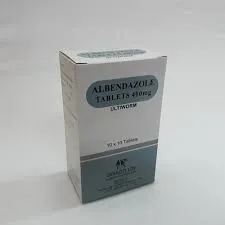- Afrikaans
- Albanian
- Amharic
- Arabic
- Armenian
- Azerbaijani
- Basque
- Belarusian
- Bengali
- Bosnian
- Bulgarian
- Catalan
- Cebuano
- Corsican
- Croatian
- Czech
- Danish
- Dutch
- English
- Esperanto
- Estonian
- Finnish
- French
- Frisian
- Galician
- Georgian
- German
- Greek
- Gujarati
- Haitian Creole
- hausa
- hawaiian
- Hebrew
- Hindi
- Miao
- Hungarian
- Icelandic
- igbo
- Indonesian
- irish
- Italian
- Japanese
- Javanese
- Kannada
- kazakh
- Khmer
- Rwandese
- Korean
- Kurdish
- Kyrgyz
- Lao
- Latin
- Latvian
- Lithuanian
- Luxembourgish
- Macedonian
- Malgashi
- Malay
- Malayalam
- Maltese
- Maori
- Marathi
- Mongolian
- Myanmar
- Nepali
- Norwegian
- Norwegian
- Occitan
- Pashto
- Persian
- Polish
- Portuguese
- Punjabi
- Romanian
- Russian
- Samoan
- Scottish Gaelic
- Serbian
- Sesotho
- Shona
- Sindhi
- Sinhala
- Slovak
- Slovenian
- Somali
- Spanish
- Sundanese
- Swahili
- Swedish
- Tagalog
- Tajik
- Tamil
- Tatar
- Telugu
- Thai
- Turkish
- Turkmen
- Ukrainian
- Urdu
- Uighur
- Uzbek
- Vietnamese
- Welsh
- Bantu
- Yiddish
- Yoruba
- Zulu
Dec . 29, 2024 16:29 Back to list
paracetamol antipyretic dose
The Role of Paracetamol as an Antipyretic Dosage and Considerations
Paracetamol, also known as acetaminophen, is one of the most commonly used medications worldwide, particularly as an antipyretic and analgesic. As an antipyretic, it is primarily utilized to reduce fever, which can be a symptom of various illnesses ranging from minor infections to more serious conditions. Understanding the appropriate dosage of paracetamol is crucial to ensure its efficacy while minimizing the risk of side effects.
Mechanism of Action
Paracetamol primarily works in the central nervous system, where it inhibits the enzyme cyclooxygenase (COX), leading to a reduction in the production of prostaglandins. Prostaglandins are chemical compounds that mediate inflammation and are responsible for increasing body temperature during a fever. By lowering prostaglandin levels, paracetamol effectively improves comfort and reduces febrile responses.
Recommended Dosage
The typical dosage of paracetamol varies based on age, health status, and the severity of the fever. For adults, the usual recommended dose is 500 mg to 1000 mg every 4 to 6 hours, without exceeding 4000 mg in a 24-hour period. For children, dosages are usually weight-based, typically around 10 to 15 mg per kilogram of body weight, administered every 4 to 6 hours as needed, with a maximum of 60 mg per kilogram per day.
It is essential to follow the recommended dosages as excessive intake of paracetamol can lead to serious liver damage. Symptoms of overdose may not appear immediately, often taking several hours to manifest, which can complicate diagnosis and treatment. Therefore, individuals must be cautious, especially in populations with pre-existing liver conditions or those consuming alcohol regularly.
paracetamol antipyretic dose

Considerations for Use
While paracetamol is generally safe and well-tolerated, certain factors should be considered before use. Individuals with liver disease or those who are pregnant or breastfeeding should consult healthcare professionals before administering paracetamol. Moreover, patients using multiple medications should be aware of the risk of paracetamol-containing products, as it is often an ingredient in cold and flu medications, leading to unintentional overdose.
Efficacy and Safety
Numerous studies have documented paracetamol's effectiveness in reducing fever, offering a reliable option for symptomatic relief. A meta-analysis demonstrated that paracetamol lowers fever in children effectively and safely, with few adverse effects when used appropriately. The drug is often preferred for its favorable safety profile compared to NSAIDs (non-steroidal anti-inflammatory drugs), particularly for those who may be susceptible to gastrointestinal issues or bleeding.
Conclusion
Paracetamol remains a cornerstone in the management of fever due to its efficacy and wide availability. Understanding the correct dosing is vital for safety and effectiveness, emphasizing the need for responsible use. While it serves as a powerful tool in symptomatic relief, awareness of its limitations and risks is essential. Always consult with a healthcare professional for guidance tailored to individual needs and circumstances.
In summary, paracetamol is a widely utilized antipyretic that plays a critical role in managing fever across various populations. Its mechanism, recommended dosages, and safety considerations highlight the importance of using this medication responsibly to promote health and well-being. Whether for children or adults, a sound understanding of how to leverage paracetamol effectively can enhance recovery and comfort during illness.
-
Guide to Oxytetracycline Injection
NewsMar.27,2025
-
Guide to Colistin Sulphate
NewsMar.27,2025
-
Gentamicin Sulfate: Uses, Price, And Key Information
NewsMar.27,2025
-
Enrofloxacin Injection: Uses, Price, And Supplier Information
NewsMar.27,2025
-
Dexamethasone Sodium Phosphate Injection: Uses, Price, And Key Information
NewsMar.27,2025
-
Albendazole Tablet: Uses, Dosage, Cost, And Key Information
NewsMar.27,2025













